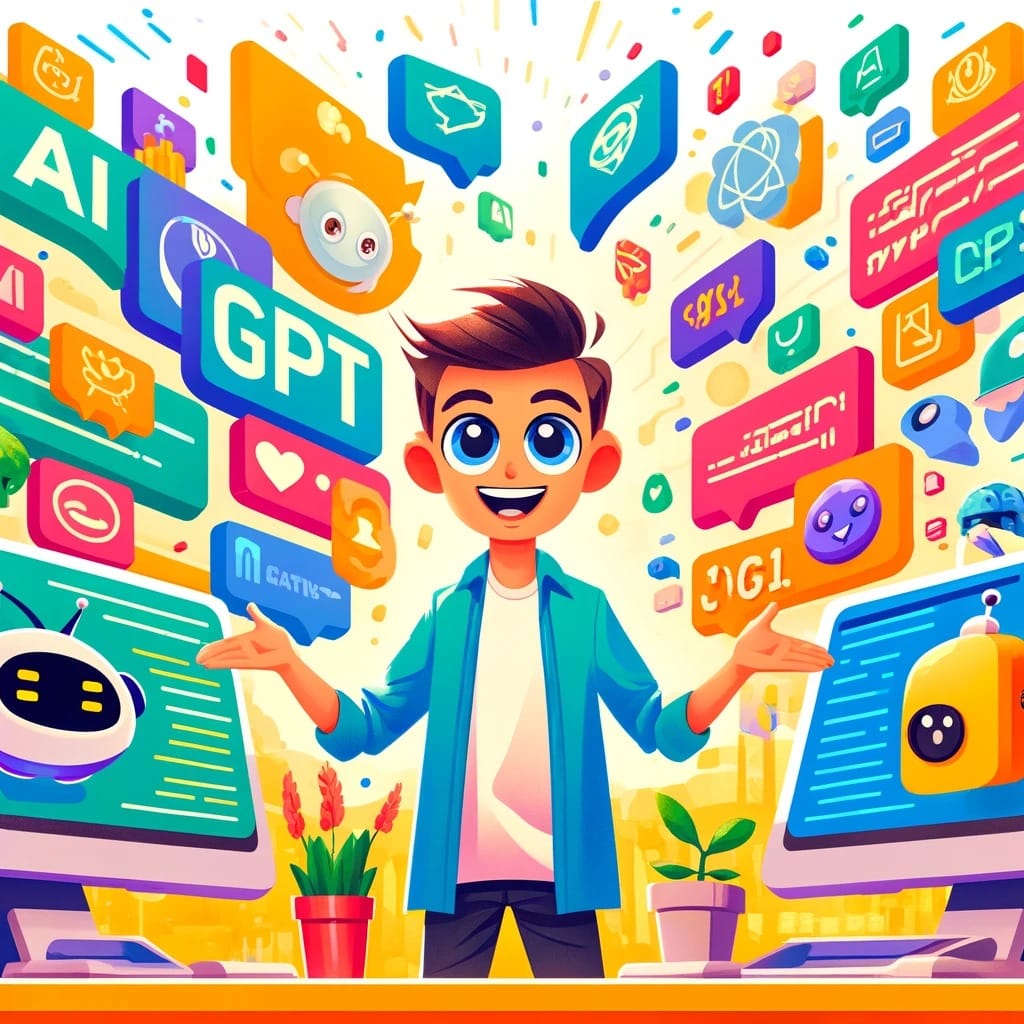How to become a ⭐STAR⭐ LLM engineer
Discover the secrets to thriving in AI engineering. Uncover top tools like Chat-GPT, Copilot, and more. Boost productivity and stay ahead!

Not too long ago, AI was relegated to the realm of Sci-Fi stories. But advances in the last 5-10 years have made the AI industry a reality. Last year, 1 out of every 4 dollars of startup funding went to an AI startup.
But what does it take to work in this space?
In this article, we will talk about the mindset and skills needed to make it as an LLM engineer. In the end, we debunk some of the most common myths in this field.
Here are 3 key habits you should develop:
1. Using the best AI-powered tools:
What’s the point of building AI if we don’t use these tools to increase our productivity? Here is a bunch of tools that will help you boost your productivity by 10x:
a) Chat-GPT: Launched in November 2022, today Chat-GPT has become an indispensable tool for workers, reminiscent of Google Search in the 2010s. So what can Chat-GPT do for you? Well, it is most useful for debugging errors in code, but can also help you with knowledge questions, drafting a difficult letter, writing a blog, switching timezone, and just about anything else you can think of.
I strongly recommend the paid version which gives you access to OpenAI’s most powerful chat models, as well as access to image generation capabilities via Dall-E3, and enables code execution and web-browsing.
b) Copilot: Github Copilot is a popular tool for coding. It was developed by GitHub in collaboration with Open AI and is trained on millions of publicly available code repositories. It is a powerful tool that can 10x your coding output by auto-completing lines or even suggesting entire code blocks. It costs $10/month with the first 30 days being free, but is well worth the price.
c) Claude Opus: The model that is literally OP, Anthropic’s Claude Opus was the first model in a year to dethrone GPT-4 from its leading position on Chatbot Arena. In most circumstances, Claude Opus functions as a replacement for Chat-GPT4. But it also has areas of particular strength, such as understanding code, discussing scientific topics, and understanding very long messages. If you don’t want to go for the paid version, the two smaller models, Sonnet and Haiku, are available for free and impressive in their own right.
d) Perplexity: Perplexity is one of the best tools to have been developed in the post-2020 gold rush of AI startups. It is an AI-powered alternative to Google, but instead of entering a search term you can ask any question and it will try its best to answer using the internet. The fact that answers are generated purely from the material it finds while browsing greatly reduces hallucinations (i.e. AI making things up), and also allows validating the accuracy of any answer against its source. Further, the annotated links make it useful for writing a report.
2. Keeping abreast of the developments:
Elon Musk says AI is the fastest-changing technology humans have ever invented. Every few weeks, there is some new model or framework that pushes the frontier of AI capabilities – whether it be Dall-E3 for generating images, Sora in terms of video generation, or the recent open-sourced Llama-3 models.
Keeping up with this information requires an inquisitive mind. There are many sources of AI news one can follow, but my favorite is the r/LocalLLaMA subreddit. I would also encourage you to follow the Twitter accounts of Andrew Ng and Yann LeCun.
3. Using AI to upgrade your skills:
We often hear about fears of “AI replacing humans”, but that is unlikely to happen soon. Much more immediate is the fear of being replaced by a fellow human with superior skills! 😱 Thankfully, AI is a powerful tool for learning new skills and gaining knowledge faster than ever. To test this out, I asked GPT4: “Can you create a quick, 1-page, 400-word or less, C++ tutorial for me?” It created a comprehensive 330-word tutorial, starting with an introduction, followed by providing set-up instructions and ending with short programs to illustrate many different concepts of the language.
You can also ask the model to teach you scientific subjects, from nuclear physics to climate change, or the history of the Roman Empire, or Beethoven’s 7th symphony.
What qualities does an AI engineer need to have?
While many qualities that make a good engineer are universal, for an AI engineer in particular, we emphasize these three qualities:
Curiosity and an eagerness to learn: Because of how new the field is, and how fast it evolves, learning and curiosity are a crucial part of being a leading engineer.
Resilience: Many things in this field don’t have a set formula. You need to be ready to grind it out when it comes to prompt engineering (i.e. describing your task in a way that the LLM understands and follows), or fine-tuning models on a novel dataset. These processes do not always follow a set pattern, so they can take many hours of trial and error.
Mental Flexibility: Problems in AI require creativity and an ability to think from multiple angles. For example, take prompt engineering. Often the same model performs incredibly well at a task framed differently. Sometimes, it turns out that a task is too difficult for LLMs e.g. averaging a bunch of numbers, but is easily solved by asking the LLM to write a Python program.
We end by debunking some common myths that have arisen in this space.
Myth #1:
Myth: Learning about Classical Machine Learning is useless because Generative AI is totally different.
Reality: Generative AI still relies heavily on concepts from Machine Learning.
Explanation: Concepts such as Generalization error, Precision and Recall, Early stopping, and BLUE score are extremely useful even in Generative AI. This is especially true if you wish to pre-train or finetune your models.
Myth #2:
Myth: You don’t need to learn how to code because all programming will be done by LLMs in the future.
Reality: AI models are a long way from replacing human coders.
Explanation: Even the hype around the recent AI coder “Devin” have come under some serious questioning. Rather than thinking of AI as a replacement, we should use AI tools like ChatGPT to improve our own coding skills.
Myth #3:
Myth: You don’t need to use Google search because AI is superior at answering questions.
Reality: While ChatGPT has replaced some of Google’s use cases, the vast majority of the time people still use Google in the workplace.
Explanation: There are 3 key reasons for this: Firstly, chat models tend to hallucinate and are unreliable. Secondly, their training data has a cutoff which means they cannot provide recent information or real-time news. Finally, these tools are expensive and rate-limited, for example, ChatGPT Plus is limited to 40 messages every 3 hours.
Myth #4:
Myth: You need to have an advanced background in linear Algebra to understand transformers.
Reality: While linear algebra helps, you don’t need an advanced math background to understand LLMs.
Explanation: This might be surprising to an outsider, but AI models at their base level are quite simple. You only need a basic familiarity with linear algebra and calculus to understand them. Even if you are new, these can be picked up in a short amount of time.
To learn more, you could visit Andrew Ng’s e-learning website which is dedicated solely to AI courses. Or refer to this excellent video for a visual explanation of LLMs.
Myth #5:
Myth: It’s too late to start in generative AI now, the market is already saturated.
Reality: Generative AI is only just beginning.
Explanation: We’ve seen AI bubbles before, but this time it’s here to stay. No, really. Generative AI is purported to take over many industries like medicine, law, education, mental health, drug discovery, etc. Forecasts suggest the market for GenAI will grow to more than $200 billion by 2030.
So don’t worry about missing out on the AI train! Rather, pack your bags and welcome aboard!!



Comments ()